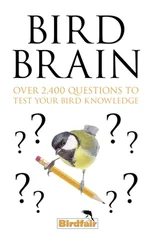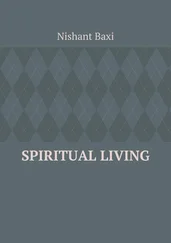Caution is therefore required. And curiosity. I have of course come across some examples of terms which are at the very least ambiguous, such as the fact that a male ‘claims’ a space, that he establishes ‘possession’ or that hummingbirds defend a ‘private hunting ground’. The fact that, in the context of territorial behaviour, aggressivity should be so prevalent and apparently so specific has also attracted a certain type of attention, particularly since observers, associating it with the usual patterns of competition, have tended to interpret it quite literally, emphasizing its aversive effect. The words used by some ornithologists to describe specific behaviours speak volumes: conflicts, combats, challenges, disputes, attacks, chases, patrols, territorial defence, headquarters (frequently used in reference to the central point of the territory from which the bird sings), war paint (to describe the colours of territorial birds) … But, at a very early stage, certain ornithologists challenged these terminological practices, not because they anthropomorphize birds but because they tend to focus attention on competitive and aggressive behaviour associated with territorialization, to the detriment of other dimensions which seemed to them of crucial importance.
That apart, as I was to discover in the course of my investigation, few ornithologists favour an approach based on ‘ownership’. The majority would prefer the definition proposed in 1939 by the American zoologist Gladwyn Kingsley Noble, ‘Territory is any defended area.’ This at least had the merit of being a relatively simple one, capable of describing almost all territorial situations. Depending on the various theories, a variety of functions would also be identified: a site can be defended in order to ensure subsistence, to protect birds from interference during the reproductive period, to provide a ‘stage’ for ‘promotion’ (a term encompassing all forms of exhibition, displays and songs), to ensure exclusive rights over a female or guarantee the stability of the same meeting place from one year to another, along with various other functions which will be examined in chapter 2. Very quickly, ornithologists realized that there was no one single way of establishing a territory but instead multiple forms of territorialization. This definition of an ‘actively defended area’ would be subject to a great many nuances as more discoveries on the subject came to light and as the multiplicity of different ways of becoming territorial were revealed. The boundaries would turn out to be far more flexible, negotiable and porous than early observations might have indicated, and, surprisingly perhaps, certain researchers would reach the conclusion that, for many birds, territories had other functions beyond simply that of protection against intrusion and ensuring exclusive use of a site. All of that will be examined in what follows.
Territory will therefore take on other meanings which extend well beyond the notion that it is simply a matter of property. Certain ornithologists were moreover at pains to point out that, when it comes to territory, what is said with reference to birds does not necessarily have the same meaning as humans would give to the term. Howard, for example, would emphasize that territory is above all a process, or rather, as he explains, part of a process involved in the reproduction cycle: ‘Regarded thus, we avoid the risk of conceiving of the act of securing a territory as a detached event in the life of a bird, and avoid, I hope, the risk of a conception based upon the meaning of the word when used to describe human as opposed to animal procedures.’ 9A few pages further on, he would add that what he calls a disposition to secure a territory amounts to a disposition to remain in a particular place at a particular moment. And even the father of ethology, Konrad Lorenz, whose book On Aggression is certainly by no means exempt from questionable and insufficiently problematized analogies, was keen to distinguish between territory and property, pointing out that territory ‘must not be imagined as a property determined by geographical confines.’ 10Territory, he adds, can also, in certain circumstances and for certain animals, be linked as much to time as it is to space. Thus, for example, cats establish what he calls ‘a definite timetable’: a given space is not divided but instead shared at different times. The cats leave scent marks at regular intervals. If a cat encounters one of these marks, it can assess whether it is fresh or a few hours old. In the first case the cat chooses a different route and in the second it continues calmly on its way. These marks, according to Lorenz, ‘act like railway signals whose aim is to prevent collision between two trains’.
Yet the cautious approach taken by Lorenz vis-à-vis possible misunderstandings (a caution which is very much relative since, on the same page, we will nonetheless be confronted with the notion of territory as a ‘headquarters’) is not quite as widely shared as might be suggested by what has so far been described. I have been referring to ornithologists, but they are not alone in taking an interest in animal territories. And that, as we say in colloquial terms, is where things take a turn for the worse. 11
So, for example, in the historical inventory drawn up by the ornithologist Margaret Nice, I find a quotation from Walter Heape, who writes, in a book on emigration, immigration and nomadism published at the end of the 1920s, that
territorial rights are established rights among the majority of species of animals. There can be no doubt that the desire for acquisition of a definite territorial area, the determination to hold it by fighting if necessary, and the recognition of individual as well as of tribal territorial rights by others are dominant in all animals. In fact, it may be held that the recognition of territorial rights, one of the most significant attributes of civilisation, was not evolved by man, but has been an inherent factor in the life history of all animals. 12
Need I point out that Heape is an embryologist and not an ornithologist? Should I also take into consideration information I discovered in probing a little deeper, notably the fact that he became famous for having successfully carried out, in 1890, the first transfer of embryos from an angora rabbit into the uterus of a female domestic rabbit (the Belgian hare), inseminated three hours earlier by a male of its own species? Does that have any bearing here? Could it be that the success of this transfer between two different types of creature (the two angora rabbits and the four little Belgian hares born as a result of the experiment are testimony to the success of the operation) might perhaps have encouraged Heape, like a form of authorization awarded to himself, to indulge in other types of transfer, without considering that these might involve risks of an entirely different nature, requiring very different precautions? In advancing such a hypothesis, I am, of course, guilty of exaggeration and, in a sense, am deliberately crossing boundaries myself, without due precaution, and in ways which may not always be in the best of taste. For it is not only a matter of style which is at stake in such analogies and comparisons, a matter of political or epistemological style, it is also a matter of taste. Isabelle Stengers proposes restoring Kant’s ‘ sapere aude ’, ‘dare to know’, to its original meaning, attributed to it by the Roman poet Horace: ‘Dare to taste.’ Learning to know something, she says, means learning to discriminate, learning to recognize what matters, learning how differences count, and learning all of that in the context of the encounter with all its attendant risks and consequences. In other words, it means connecting with the inherent plurality of what matters for these particular beings , the ones we are trying to get to know, and of what matters because of them. It is an art of consequences. 13
Читать дальше












